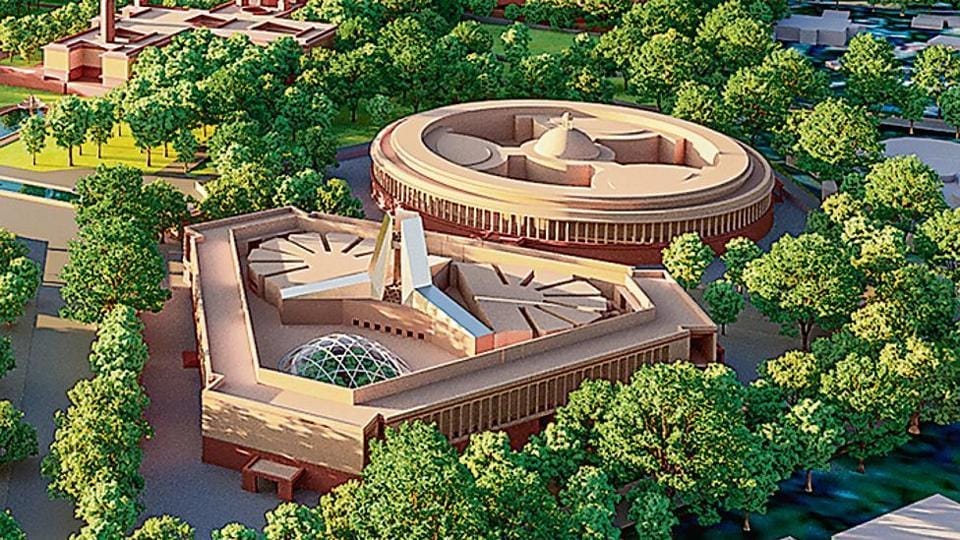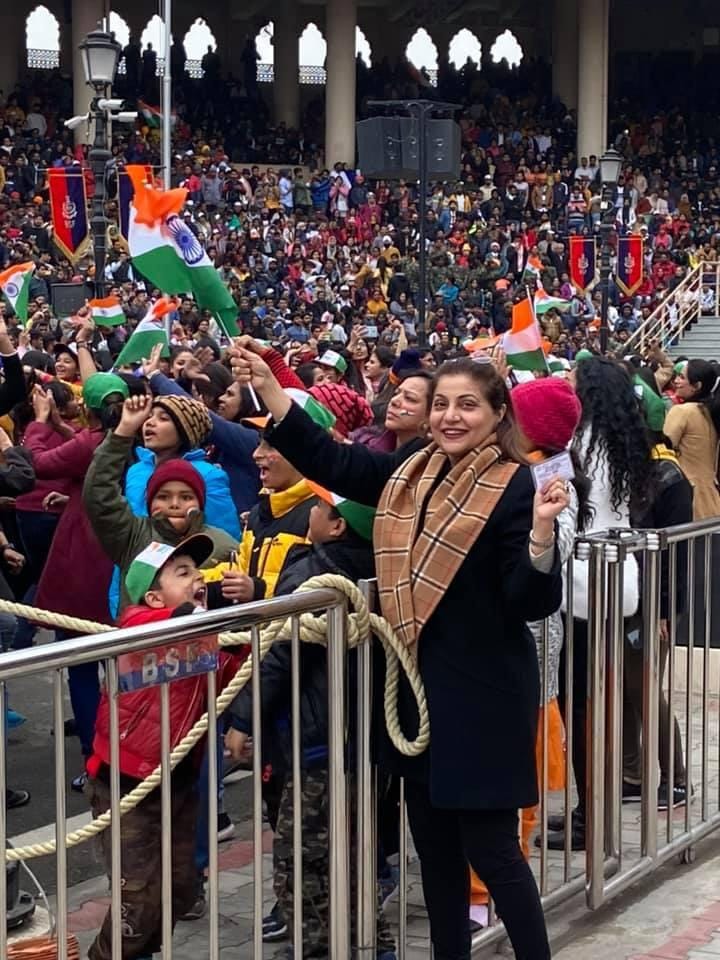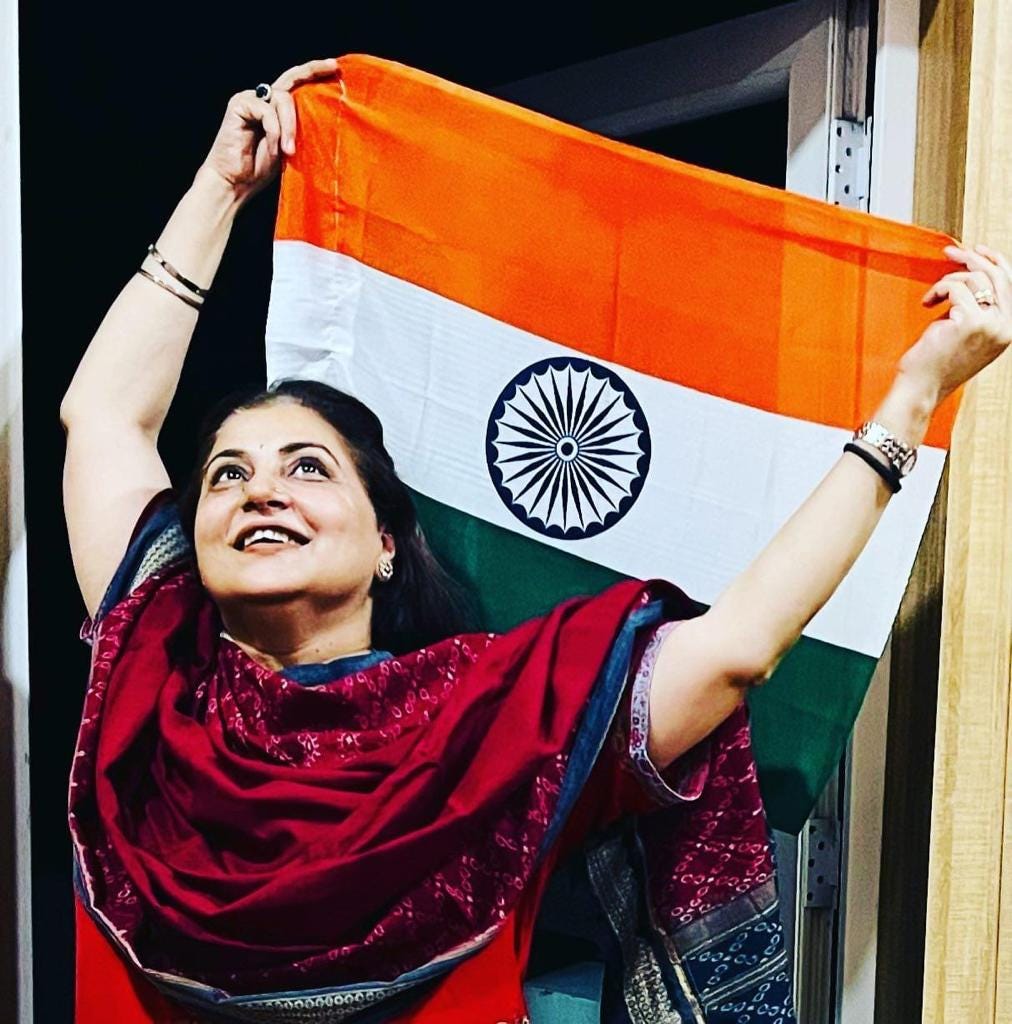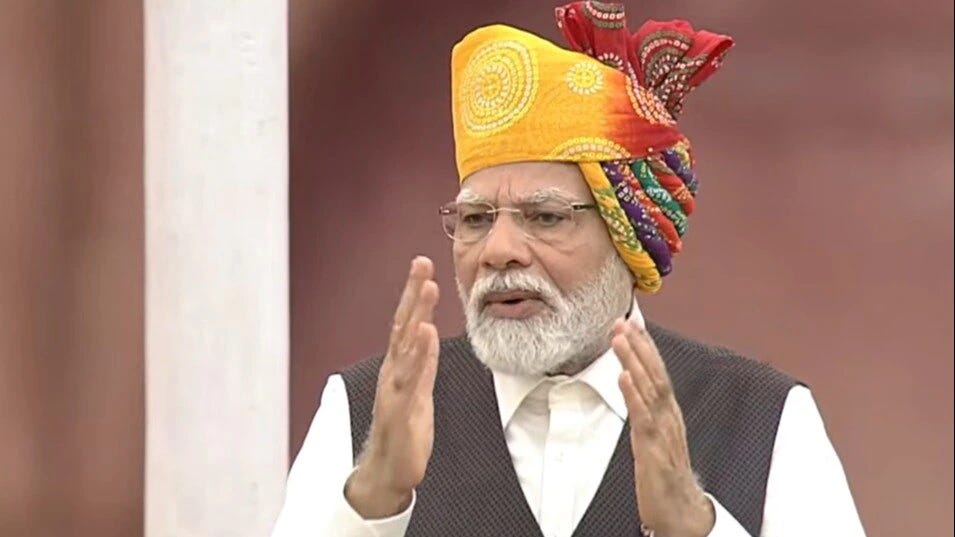The Idea of India: The Immutable Fabric of Unity
What truly defines the spirit of India? Is it our Constitution, the National Anthem, the Indian Rupee, or the legacy of Mahatma Gandhi? Accompany me on my introspective journey to discover the answer.

The Idea of India: The Immutable Strand of Unity
On the eve of 15th August 2023, as shadows lengthen and the promise of a new dawn looms, my mind is drawn into deep introspection. The ambient melodies of freedom reverberate, and a tangible spirit of patriotism is in the air. As we poised to celebrate yet another year of our cherished Independence, a question beckons with urgency: What encapsulates the very essence of contemporary India? What is that unwavering, immutable strand that weaves through the heart of every Indian, forging a bond of unity? My introspection led me through nine notable elements, each resonant in its significance. However, it was the tenth that truly echoed, capturing what I believe resonates within every Indian soul. Join me, as we journey deeper into this exploration, seeking the core of our National identity.
1. The Indian Constitution: Our Beacon with Many Shades
The Indian Constitution stands tall as a beacon of our democratic values and ideals, championing equality under Articles 14 and 15. Beyond its legalistic text, it reflects a profound understanding of our Nation's historical and societal nuances. This is evident in the provisions made for Scheduled Castes, Scheduled Tribes, and Other Backward Classes, aimed at addressing and rectifying historical injustices. While these provisions underline India's commitment to social justice, they inadvertently introduce certain distinctions, emphasizing the intricate dance between unity and diversity. Similarly, the demarcation of States and Union Territories, although essential for administrative and cultural coherence, occasionally hints at layered unity. Every individual who steps into public service swears solemnly to "preserve, protect, and defend" this venerated Constitution, acknowledging its multi-faceted interpretations and its history of judicial reviews. Yet, with deep respect and reverence, I contend that even this magnificent document, which has evolved through over a hundred amendments, might not wholly encapsulate the intricate essence that defines us, as a Nation.
2. The National Anthem: A Collective Heartbeat
The strains of our "National Anthem" resonate deeply within the hearts of every Indian. Composed by the legendary Rabindranath Tagore, the exact meaning of its Bengali lyrics might not be familiar to all, but the Anthem's spirit bridges these linguistic gaps, binding the Nation together in a unified chorus of pride and hope. Tagore, a luminary in Indian literature and a Nobel laureate, demonstrated his profound love for the Nation by renouncing the "Sir" title conferred upon him by the British, a more than just a symbolic protest against the brutal Jallianwala Bagh Massacre. Though many may allude to the rendition of the Anthem during the "Delhi Darbar" of 1911, marking the visit of British Monarch King George V to India, it is truly the Anthem's timeless essence that captures the shared aspirations and dreams of our Nation. Equally evocative is our National Song, "Vande Matram", deeply embedded in the annals of our freedom struggle. Yet, if even our National Anthem, so deeply cherished, doesn't singularly define our identity, then "Vande Matram", also in Bengali, underscores the point that finding that one binding thread is indeed a complex pursuit.
3. India, Bharat, or Hindustan?
The very name of our Nation, as outlined in Article 1 of the Constitution, proclaims, "India, that is Bharat, shall be a Union of States." Yet, even within this nomenclature, one can discern subtle divisions. While "India" conveys a sense of modernity and positions us on the global stage, possibly reflecting our colonial past, "Bharat" anchors us to our ancient roots and rich traditions. And then there's "Hindustan," a term replete with historical connotations, sometimes evoking sentiments of regional pride or even contention. These varied appellations, though reflecting the rich tapestry of our history and evolution, also underscore the complexity of defining a single, unified identity for a Nation as diverse as ours.
4. Language: India's Diverse Melody
India's linguistic tapestry is as diverse and vibrant as its expansive landscapes. From the timeless verses of Sanskrit, the bedrock of our ancient scriptures, to the rhythmic nuances of Tamil, among the world's oldest languages, we are a mosaic of words, narratives, and legacies. Although English and Hindi often stand out due to their official designations, it's crucial to note that India does not have a formal National Language, even though 22 languages, including Hindi, are recognized by our Constitution. English, while uniting many and serving as our gateway to the global stage, doesn't singularly embody our linguistic identity. Hindi, widespread in its reach, is merely one voice in our rich chorus. Hence, amid this linguistic symphony, no single language can assert itself as the exclusive emblem of India's soul, underscoring the harmony in our vast diversity.
5. The Indian Passport: Our Global Emblem
The Indian passport stands as our beacon in the international realm, symbolizing our identity and citizenship. Delving deeper, one discerns its three distinct categories: "ordinary", pivotal for the general populace; "official", designated for government representatives on official duties; and "diplomatic", reserved for top-ranking officials and envoys. Beyond these, distinctions such as the Overseas Citizen of India (OCI) and Person of Indian Origin (PIO) weave intricate tales of India's global interactions and diaspora. However, it's poignant to note that many Indians might never hold any of these passports in their hands. Those with OCI and PIO statuses, enjoying numerous privileges similar to Indian citizens, are however denied essential rights like voting or contesting in constitutional electoral offices. Their unique position narrates stories of migration, evolving identities, and India's expansive global footprint.
6. The Indian Rupee: A Narrative of Unity and Disparities
Money, as the adage goes, speaks a language understood globally, serving as a bridge when words might fail. In India, our rupee is not just a medium of transaction—it encapsulates our collective dreams, triumphs, and challenges. While the Indian rupee, at a cursory glance, may present itself as a unifying symbol for the nation, closer scrutiny tells divergent stories. It stands as a testament to shared economic endeavors, yet concurrently, it underscores the glaring disparities between the wealthy and the marginalized.
The narrative takes a significant turn when considering the 2016 demonetization, a bold move by the Government aimed at curtailing the shadow economy and reducing black money in circulation. However, beyond its implications on accounted and unaccounted wealth, this initiative highlighted the delicate balance between legitimate commerce and the parallel economy, weaving an intricate tale of ethics, ambition, and necessity.
The rupee's story doesn't end with merely 'white' or 'black' classifications; it's a saga that interweaves layers of societal fabric where individuals navigate the nuanced continuum between these two realms. Hence, while the rupee remains a vital component of our daily existence, to consider it as the exclusive symbol of national unity would be to overlook its multifaceted dimensions.
7. "Saare Jahan Se Achha" (सारे जहाँ से अच्छा): A Poignant Reflection of Unity and Divides
"Saare Jahan Se Achha" (सारे जहाँ से अच्छा) is more than just a poetic refrain—it beautifully captures the essence of Hindustan's vast landscapes, its vibrant history, and the myriad cultures that crisscross its terrains. The song, penned in elegant verses, traverses the soul of the nation, evoking sentiments of love and loyalty towards the motherland. However, the legacy of its creator, Allama Iqbal, adds layers of complexity to its embrace. While Iqbal initially epitomized the shared dreams of a united India, he later evolved into a thought leader championing the idea of a separate homeland for Muslims, leading to the birth of Pakistan. This transformation mirrors the larger evolution of India’s nationalistic aspirations and the challenges faced in melding diverse communities into a single Nation. Given this dual legacy, while "Saare Jahan Se Achha" resonates profoundly with many, relying on it as the definitive thread of unity becomes complicated, reminding us of the need to continuously negotiate our shared histories and futures.
8. Bollywood's Melodies: The Harmonies and Dissonances of a Nation
Bollywood's symphonies have transcended regional boundaries and etched themselves into the very fabric of the nation. The mellifluous voice of the Nightingale of India, Lata Mangeshkar, especially through soul-stirring patriotic anthems like "Aye mere watan ke logo," has touched countless Indian hearts, evoking a sense of shared patriotism. Yet, even as these melodies inspire collective fervour, their resonance can differ regionally, with some lyrics striking deeper chords in specific parts of India. While Bollywood's harmonies have the power to evoke a shared emotional response, using them as the sole descriptor of the multifaceted idea of India can be limiting. The industry’s offerings, rich and varied as they are, provide a snapshot, but perhaps not the complete portrait of our intricate nationhood.
9. Mahatma Gandhi: The Global Icon of Peace with Human Imperfections
Mahatma Gandhi, fondly known as the "Father of the Nation," is a colossus who casts a long shadow over the history of our Nation and beyond. Internationally heralded as an emblem of peace, his pioneering philosophy of non-violence inspired countless movements worldwide, cementing his status as a global figure of unity and harmony. Yet, despite such profound impact, the Nobel Prize for Peace eluded him, a reminder of the sometimes inscrutable ways in which global recognitions work. Closer home, his stoic acceptance during the tumultuous times of the Partition revealed the intricacies and burdens of leadership. And while his unfortunate assassination elevated him to the stature of a martyr, it also underscored the divisions that India grappled with. Gandhiji's life, a mosaic of valour, principle, compromises, and human vulnerabilities, serves as a poignant reminder that while he is integral to our National narrative, equating him solely with the vast and varied idea of India might not encapsulate its complete essence.
10. The Tricolour: The Timeless Fabric of our Freedom Struggle and Beyond
Our introspective journey traversing the expanse of India's identity culminates profoundly in our National Flag, the Tricolour. This emblem, a testament to our freedom struggle, symbolizes far more than just fabric and dye; it's the palpable heartbeat of over a billion dreams. Adopted by the Constituent Assembly on 22nd July 1947, its vibrant saffron, pure white, and verdant green, accentuated by the Ashok Chakra, chronicle tales of valour, peace, prosperity, and righteousness. Since 15th August 1947, this flag has officially waved high as the pennant of our Nation.
For years post-independence, waving the Tricolour was largely the privilege of a select few. However, in a transformative judgment, the Supreme Court of India affirmed that every Indian citizen has the inherent right to fly the Tricolour, ensuring respect and compliance with the Flag Code. This isn’t a mere ceremonial act but an embodiment of the sacrifices made by our forefathers.
Moreover, the bold and historic abrogation of Article 370 further solidified the Tricolour's sacrosanct position in our national consciousness, underlining its indisputable sway across the Nation's territories.
“Har Ghar Tiranaga”
Prime Minister Narendra Modi's resonating clarion call of 'Har Ghar Tiranga' is not just a refrain for Independence Day; it's a perpetual summons echoing across the vast landscapes and diverse tapestry of our nation. His words are a passionate entreaty for every Indian, from the snow-capped Himalayan peaks to the golden sands of our coasts, to not only hoist the Tricolour but also to embrace its profound symbolism. It encourages us to remember and reflect upon the countless sacrifices made, the centuries of heritage, and the aspirations of a New India. These ideals, encapsulated in the Tricolour's vibrant hues and the spinning Ashok Chakra, shouldn't just flutter in the breeze annually; they must find a perpetual abode in our daily actions, thoughts, and ethos. As the sun rises and sets on this vast subcontinent, let the principles of justice, liberty, equality, and fraternity remain deeply rooted in every Indian heart, illuminating our path forward throughout the year.

As we stand on the cusp of our 77th Independence Day, may we rekindle our allegiance to the Nation and its cherished ideals. Here's to an India that eternally dreams, ceaselessly aspires, and grows undivided, bound by the unbreakable threads of the Tricolour.
Happy Independence Day!
Jai Hind!
EPILOGUE
On 15th August, 2023 on the occasion of the 77th Independence Day, PM Narendra Modi spoke about India’s unique 3D advantage:
Democracy, Demography and Diversity.
His detractors offer:
Derogation, Distrust, Disunity, Distraction, Degradation, Discord, Discontent, Dissent, Disintegration, Despondency.
Take your pick—very carefully.
What “We, the People” desire:
Dignity, Development, Dedication, Determination, Dialogue, Discipline, Dynamism, Decency, Duty, Dreams.
Add to this wish list.







You wrote these articles from depths of your heart . Explained true story of 1947 partition.Very emotional ,& scary . Why it happened , we all know? Political parties played dirty rolls .I was six years old & remember those dark nights .
We can’t forget , let us celebrate together . Thanks , you did great efforts & hard work . 🌺🙏🙏🙏🙏🎉